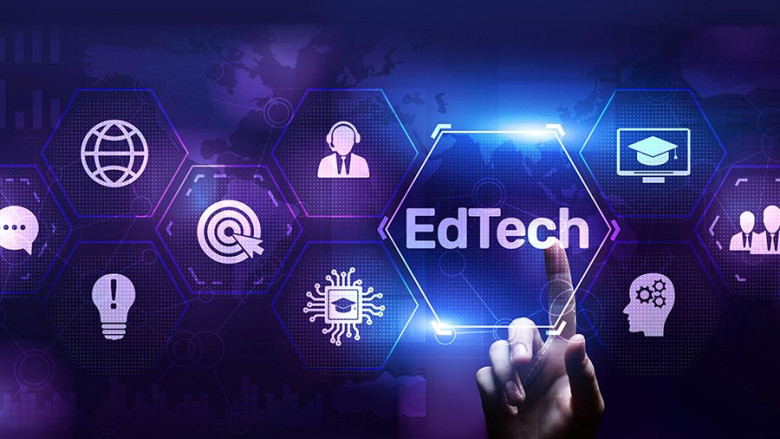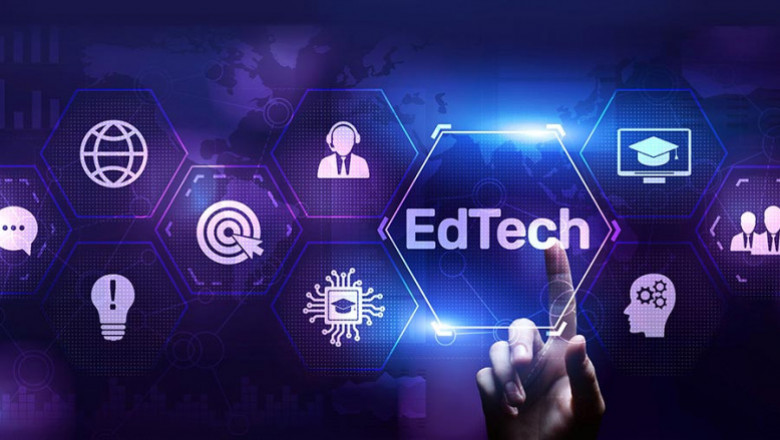views
Artificial Intelligence (AI) is revolutionizing the education technology (EdTech) sector, enabling personalized learning, automating administrative tasks, and enhancing accessibility. From adaptive learning platforms to intelligent tutoring systems, AI is reshaping how educators teach and students learn. This article explores AI’s transformative role in EdTech, its applications, and future implications.
1. Personalized Learning Experiences
AI tailors educational content to individual student needs, addressing diverse learning paces, styles, and strengths. By analyzing performance data, AI algorithms create customized lesson plans, ensuring no learner is left behind.
Key Innovations
-
Adaptive Learning Platforms: Tools like Knewton and DreamBox adjust difficulty levels in real time based on student progress.
-
Learning Analytics: AI tracks metrics like engagement and comprehension to recommend resources (e.g., Coursera suggests courses based on user history).
-
Gamification: Platforms like Duolingo use AI to turn language learning into interactive, reward-based experiences.
A study by the Bill & Melinda Gates Foundation found that personalized learning models boosted math and reading scores by 20–30% in pilot schools. Such systems also reduce dropout rates by keeping students motivated through relevant content.
2. Automating Administrative Tasks
Educators spend up to 50% of their time on administrative duties. AI streamlines these tasks, allowing teachers to focus on instruction and mentorship.
AI-Powered Tools
-
Grading Automation: Tools like Gradescope use machine learning to evaluate essays and coding assignments, providing instant feedback.
-
Attendance Tracking: Facial recognition systems (e.g., Classcard) automate roll calls and monitor participation.
-
Plagiarism Detection: Turnitin’s AI scans submissions for unoriginal content, ensuring academic integrity.
For instance, Georgia State University uses an AI chatbot to answer 200,000+ student queries annually, reducing administrative workload by 30%.
3. Intelligent Tutoring Systems
AI-driven tutors provide 24/7 support, mimicking human instructors to explain complex concepts and answer questions. These systems bridge gaps in traditional classroom settings.
Applications
-
Natural Language Processing (NLP): Tools like Carnegie Learning’s MATHia engage students in dialogue-based problem-solving.
-
Virtual Labs: AI simulates experiments in platforms like Labster, offering hands-on science practice without physical equipment.
-
Language Learning: ELSA Speak uses speech recognition to correct pronunciation in real time.
A Stanford study revealed that students using AI tutors performed 15–20% better in standardized tests than peers relying solely on traditional methods.
4. Data-Driven Insights for Educators
AI aggregates and analyzes vast amounts of student data to uncover trends, predict outcomes, and inform teaching strategies.
Impactful Use Cases
-
Predictive Analytics: Platforms like Civitas Learning identify at-risk students by analyzing attendance, grades, and engagement, enabling early interventions.
-
Curriculum Optimization: AI tools like Content Technologies Inc. generate textbooks tailored to institutional needs.
-
Professional Development: TeachFX provides feedback on teaching methods by analyzing classroom audio recordings.
For example, Houston ISD reduced course failure rates by 18% after using AI to redesign curricula based on student performance patterns.
5. Enhancing Accessibility and Inclusion
AI breaks down barriers for learners with disabilities and non-native speakers, fostering equitable access to education.
Breakthrough Solutions
-
Speech-to-Text Tools: Otter.ai transcribes lectures in real time for hearing-impaired students.
-
Translation Services: Google Translate integrated into LMS platforms like Canvas helps multilingual learners.
-
Assistive Technologies: Microsoft’s Immersive Reader uses AI to improve readability for dyslexic students.
In 2022, the University of Illinois reported a 40% increase in retention among ESL students after deploying AI translation tools.
6. Future Trends and Challenges
While AI’s potential in EdTech is vast, ethical and practical challenges must be addressed to ensure sustainable growth.
Emerging Trends
-
AI-Driven VR Classrooms: Immersive environments like EngageVR will enable global collaborative learning.
-
Emotion Recognition: Tools like Affectiva could adapt content based on student mood and focus levels.
-
Lifelong Learning: Platforms like Degreed will use AI to curate upskilling paths for professionals.
Key Challenges
-
Data Privacy: Protecting sensitive student data from breaches (e.g., Edmodo’s 2020 breach exposed 77M accounts).
-
Bias in Algorithms: Ensuring AI tools don’t perpetuate racial or gender stereotypes in grading or recommendations.
-
Digital Divide: Limited internet access in rural areas may widen educational inequities.
Conclusion
AI is a game-changer for EdTech, offering scalable personalization, efficiency, and inclusivity. While challenges like privacy and bias persist, proactive collaboration among educators, policymakers, and technologists can harness AI’s potential ethically. As AI evolves, it will democratize quality education, preparing learners for a rapidly changing world.















Comments
0 comment